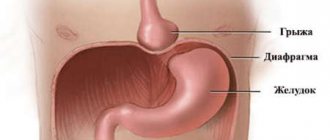Colostomy is the removal of the intestine outside in a place other than its natural place - on the stomach, when it is impossible to surgically restore normal intestinal patency. An intestinal stoma or unnatural anus is performed either for health reasons, when, due to severe pathology of the abdominal cavity, it is impossible to carry out treatment in a more gentle way, or it is temporarily necessary to create favorable conditions for the treatment of intestinal disease.
Our expert in this field:
Ryabov Konstantin Yurievich
Chief surgeon, oncologist, endoscopist
Call the doctor
Today, out of every 500 adult Russians, one person has a permanent colostomy.
Indications for colostomy
Clinical guidelines do not prescribe to the surgeon in what specific situations after intestinal resection it is necessary to form a colostomy, because colostomy is an extreme surgical option when there is no other alternative.
First of all, during the operation, the surgeon must consider the possibility of restoring the integrity of the intestine - connecting the end sections. The surgeon creates an unnatural anus only when organ-preserving surgery is completely impossible, when a large section of the intestinal tube is removed and the ends cannot be brought together. The decision on the size of the intestinal section to be removed and the formation of the stoma is not made before surgery; the final surgical plan is formed only during the surgical intervention.
Colostomy indicates that there is currently no surgical possibility to recreate a continuous intestinal tube. After some time and only after successful treatment, the hole can be closed - the stoma is removed.
Colostomy is possible for oncological diseases and conditions:
- a malignant process of any part of the intestine, complicated by almost complete blocking of its lumen by tumor masses;
- involvement of anatomical structures of the abdominal cavity and retroperitoneal space in the cancer conglomerate emanating from the intestine, which cannot be removed;
- malignant neoplasm of the abdominal cavity , compressing the intestines and causing obstruction, for example, ovarian cancer;
- for rectal cancer accompanied by deformation and obstruction of the intestinal lumen
- disintegration of a recurrent cancer tumor several years after irradiation.
Colostomy is performed for the following benign processes:
- damage to the intestinal mucosa by polyps over a large extent;
- hereditary diseases with a high probability of malignancy of intestinal polyps, in this case colostomy is considered cancer prevention;
- extensive adhesive disease of the abdominal cavity with the development of intestinal obstruction, when it is impossible to cut all the adhesions deforming the intestine;
- if drug therapy for severe ulcerative disease of the intestinal wall, including Crohn's disease, or diverticulitis is ineffective;
- when it is necessary to temporarily shut down the intestines from functioning in order to excise the purulent fistulas connecting the intestines with the genitourinary organs and wait until the wound is completely healed;
- penetrating abdominal trauma with multiple intestinal injuries.
Our doctors will help you
Leave your phone number
Types of colostomy
An stoma can be temporary or permanent, that is, lifelong.
According to the level of location, all stomas are divided into two groups - small intestinal and large intestinal, and according to the rules, only large intestinal ones are called colostomy:
- in the small intestine, a distinction is made between jejunostomy, that is, the outlet of the jejunum to the outside, ileostomy - ileum and blind - cecostomy;
- in the large intestine, the stoma at the level of the ascending section is an ascendostomy, in the transverse colon part there is a transverse stoma, the outlet of the descending section is a descendostomy, and the sigmoid section is a sigmostoma.
When the rectum is damaged, a sigmostoma is also formed. Most often, sigmostoma and transversostomy are applied.
By appearance they are distinguished:
- single-barrel, when after resection only the upper part of the remaining intestine comes out, the anus is tightly sutured;
- double-barreled - both edges of the dissected intestinal tube are located on the stomach, either separately - at a distance from each other, or side by side in the form of a loop.
The shape of the outer part can be a “column” or flush with the skin of the abdominal wall - a “flat” stoma.
Regardless of the type of colostomy, surgical intervention should take into account the individual characteristics of the disease and the patient’s preferences. At the Medicine 24/7 clinic, each standard operation is one of a kind, and non-standard surgery is unique in other institutions.
Colostomy placement
In most cases, colostomy is only the first stage of surgical intervention, the second is restoring the integrity of the intestinal tube, that is, closing the stoma. The second stage is the most important for the patient; as a rule, for cancer it is planned with a delay of several months, for benign and inflammatory processes - for several weeks.
Planned surgical intervention with active preliminary preparation of the patient is always preferable, which improves the course of the postoperative period and the patient’s recovery. An emergency colostomy is performed in case of intestinal obstruction of any etiology or “acute abdomen”, that is, when the operation is performed for health reasons.
Surgery requires general anesthesia and serious anesthesia, because the operation is quite long.
During planned surgery with a high probability of a colostomy, before making a skin incision, the surgeon uses a marker to mark the location of the intestine on the abdominal wall. There should be no old scars in this area; the site chosen for the stoma should be sufficient for attaching the colostomy bag plate.
Depending on the location of the pathological process, the outlet can be located in the hypochondrium or just above the iliac region on the right or left. The hole is formed where the colostomy bag will not deform during body movements or interfere with the patient, that is, not at the waist line, not in the groin, not near the pelvic bones, not at the navel.
After dissection of the abdomen, a revision is carried out - a thorough examination of the abdominal cavity, then the intestines are dissected. After resection of the pathological area or hemicolectomy, or extirpation of the rectum, the surgeon begins to create a colostomy. Then a second revision is carried out and the final stage of the operation is closure of the wound. A special postoperative colostomy bag is placed on the patient’s operating table to monitor the condition of the stoma and bandage the wound.
The complexity of the postoperative period depends on the initial disease and the condition in which the patient entered the operating table.
We will call you back
Leave your phone number
Colostomy irrigation. What is stoma irrigation?
Irrigation of a colostomy is the washing of the intestines through the stoma, with the aim of controlled emptying. The point of the procedure is to ensure that feces do not pass at any time, but during flushing, and that the colon adapts to regular bowel movements. Irrigation can only be used for a colostomy. The ileostomy (small intestine) cannot be washed .
Irrigation allows you to use only an ostomy tampon, a mini cap, or a small colostomy bag to close the stoma.
This process can increase the independence and quality of life of the ostomate, allowing a more active life with an ostomy.
The procedure can be performed only after consultation with a doctor. Because there are some dangers and risks.
For children, rinsing is not used.
Irrigation can only be used for colostomy.
The ileostomy cannot be washed.
Basics of irrigation procedure:
1.Irrigation can be performed after the doctor’s permission and appropriate training. Although the procedure is relatively easy to learn, it is better to have a professional demonstrate it the first 1 or 2 times.
2. The irrigation kit consists of: an irrigation sleeve, a special funnel for penetrating the stoma, a water tank with a pressure regulator, and a belt. You will also need warm water at a temperature of 36-38 degrees, gloves, lubricant, toilet paper.
3. Irrigation schedule. It is produced individually, depending on nutrition and physiology. Irrigation cleanses the entire colon, and the time it takes to replenish depends on your body and your diet. Most people irrigate several times a week. After irrigation, there is no stool for about 24-48 hours. To develop a schedule, begin to irrigate no more than once a week. Then adjust, if necessary, carry out more often. Once this schedule is established, you will no longer have to wear a large colostomy bag all the time. Instead, you can use stoma tampons or minicaps.
4.Irrigation takes about an hour . Setting aside a specific time to irrigate will help you remember to do so and help your body develop a regular bowel movement time.
5.Attach the cone tip to the end of the irrigation tube. Clamp the tube so that no water flows yet. Fill the bag with 500–1,500 ml of water at body temperature (36–38 degrees). Hang the watering bag at shoulder level or higher, preferably above your head. Attach the adjustable ostomy belt to the irrigation sleeve and place it around your waist. To hang a container of water, try using a clothes hanger attached to the corner of your bathroom mirror. Or consider installing a more permanent fixture for regular use.
6.When you attach your belt to your body, the stoma should be in the center of the irrigation sleeve ring.
7. Ostomy specialists suggest using 500 milliliters of warm water for the first few irrigations. The quantity can then be adjusted.
Preparing for irrigation:
Decide on your position during irrigation. Some people prefer to stand next to the toilet, although this can be tiring. You can also sit directly on the toilet or on a chair next to the toilet. Adjust the length of the irrigation hose depending on your position and height. If necessary, it can be trimmed. The sleeve should fit into the toilet without touching the water in the toilet.
Attach the irrigation sleeve to the colostomy bag plate if you are using a two-piece system or to the pressure plate (for a one-piece colostomy bag). Put on the belt and lower the end of the sleeve into the toilet.
Release the air from the water supply tube until water flows.
Insert the tip of the funnel into the stoma , first lubricate the funnel with a water-based lubricant. You can help with a gloved finger and push the stoma opening a little. The main thing is not to use force so as not to damage the intestine.
The funnel tip should fit snugly to minimize leakage during the watering process.
Your stoma may react to touch by shrinking. If this happens, sit quietly for a few minutes, take a few deep breaths, and try again.
Irrigation Process:
1.Slowly release the clamp on the tube, allowing the water from the bag to flow into the cone and into the stoma. If you start to feel bowel cramps, slow or stop the water for a minute and relax, try again.
This process should take about 5-10 minutes.
2. After the water bag is empty, hold the funnel in the same position for about 10 seconds. Then remove the funnel.
3. Drain the calla lilies through the irrigation hose for 10 minutes to empty the contents into the toilet. Once the stool has finished flowing, do not remove the sleeve for a full hour, especially the first time, until you know how your body will react to the irrigation. You don't have to stay in the bathroom all the time - you can close the sleeve and go about your business. If you feel yourself starting to pass more stool, go back to the bathroom and empty your sleeve into the toilet.
Some people may need to keep the sleeve on for no more than 20 minutes.
Be sure to pinch the sleeve before moving to avoid leakage.
4.After the end of the stool discharge, remove the irrigation sleeve, rinse the skin around the stoma and close it. You can use a minicap, ostomy tampon, or colostomy bag.
5.Rinse the entire irrigation system thoroughly and dry. Wash the funnel with soap.
Colostomy maintenance
In the hospital, a colostomy bag is selected for the patient, taking into account the individual characteristics of the colostomy, and they are taught how to properly care for it.
There are colostomy bags of different designs, with certain emptying or replacement intervals. There are “one-piece” receivers - single-component, consisting of a bag with a plate glued to the hole. There are two-component ones - a separate plate for the stoma and a separate bag. The latter colostomy bags are preferable; they can be used for several days. Any colostomy bag is glued to the ostomy opening only after careful treatment of the skin, so as not to provoke local inflammation; cleaning of the colostomy should be regular.
The pharmaceutical industry offers a huge variety of special skin care products around the hole: long-lasting and water-resistant films that form a smooth surface for gluing the colostomy bag plate, sealants, protective skin gels and ointments. It is extremely difficult for the patient to understand what is right for him. It is the wide variety of care products that requires mandatory participation in the process of selecting a specialist.
Introduction
Sports activities
Physical exercise is good for everyone. What you can do today depends on what you could do yesterday. Swimming and walking will help you stay in great shape and maintain energy without much physical effort. Remember that resuming exercise should be gradual.
Your stoma care professional will advise you on how to minimize the risk of a hernia.
How to choose a swimsuit
Try before you buy. No special swimsuits are needed.
For women:
- Close-up swimsuit with trim in the form of ruffles, belts, pockets, etc. will make the colostomy bag (urine bag) completely invisible under clothing.
- A swimsuit with a tight belly panel can provide additional support.
- Tunics, sarongs and pareos are very convenient for covering up on the beach.
For men
- Lycra or elastic swim trunks under swimming shorts will help keep the colostomy bag in place.
How to sunbathe
- Apply tanning lotion after gluing the colostomy bag, since creams, oils and lotions will not allow the colostomy bag to be sealed.
Diet
You don't need to follow a special diet, but like everyone else, some foods cause gas or are not digested at all.
If you think your consumption of a particular food is causing problems, try eliminating it from your diet for a while and then start eating it again. If you do this three times with any suspect food, then make sure whether its consumption is the cause of your problems. Chewing food thoroughly helps digestion. In addition, activated carbon tablets, mint or fennel tea will help reduce gas formation.
Yogurt also helps some people.
Products that cause gas: cabbage, Brussels sprouts and cauliflower, broccoli, spinach, beans, peas, onions, garlic, cucumbers, corn.
Beverages
As before surgery, the amount of fluid consumed affects the shape of the stool. This varies greatly from person to person, but many people find that carbonated drinks and beer cause gas.
It is better to drink water and juices than tea and coffee, which can cause dehydration. As for alcoholic beverages, they should be consumed in moderation and should be avoided when taking medications.
If you are concerned, contact your doctor or ostomy care professional.
Constipation
If you suffer from constipation, you should change your diet. You know your body, so you understand when it functions normally. If gas is coming out of your stoma, your stoma is functioning normally.
Increasing your fluid intake may help with constipation, but if you feel discomfort or have concerns, contact your doctor or ostomy care professional. If you haven't had a bowel movement for 3-4 days, you may be recommended laxatives.
Diarrhea
Sometimes, like everyone else, you may have loose stools or diarrhea.
Don't worry too much about this.
A single attack of diarrhea can be caused by food consumed and will soon go away on its own.
However, three or more bouts of diarrhea is a cause for concern as it can lead to dehydration.
If this is the case, you should consult your doctor or ostomy care professional.
Eating out
Once you figure out what kind of food suits you best, you can try going to a cafe or restaurant.
Start in a familiar place and try a simple dish.
When choosing dishes, you shouldn't be too careful, just be smart about it. Eat what you want, but don't forget that fatty foods and sauces can lead to problems. If you are afraid to consume certain foods, try them at home first to see how your body reacts to them, and then gradually introduce them into your diet.
If you used to drink a little alcohol in the past, you can try again, just start with a smaller dose than usual. This will help your body get used to alcohol again.
Communication
After the operation, nothing should prevent you from being in society, meeting friends, going to the cinema, theater, cafe or restaurant, or traveling.
Start small. For example, traveling by public transport, visiting friends or relatives, going to the country. Soon you will get used to your ostomy and will be thinking about spending the holidays with friends or going on vacation to a resort.
When you meet new people, you don't have to tell them about your condition, unless, of course, you want to share it yourself. Everything depends on you.
Intimate relationships
Any surgery can affect the way you look and feel about your body. Try to accept your new condition, of course, it will take time. This applies not only to the stoma, but to the whole body.
Sexual activity does not pose a risk of damaging the stoma, and most people resume an active sex life. It's natural to feel nervous about this, so only do things that don't cause discomfort, take your time, and discuss it with your partner.
There are small colostomy bags (mini mouth guards), as well as ostomy tampons that can be used during intimate moments. Contact your Patient Care Center for information on where to purchase them.











